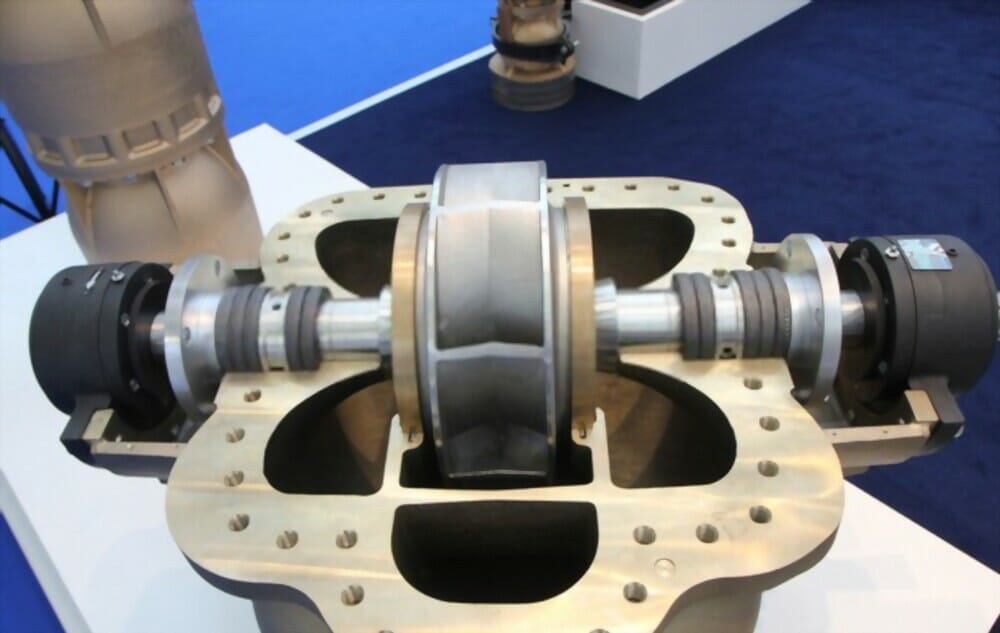Have you ever wondered how to properly install packing in centrifugal pumps? Incorrect installation can lead to leaks, reduced efficiency, and even pump failure.
In this blog post, we’ll guide you through the step-by-step process of installing packing in centrifugal pumps.

Preparing the Pump for Packing Installation
First, disconnect the power supply to the pump and ensure that it cannot be accidentally turned on during the maintenance process.
Next, isolate the pump from the system by closing the suction and discharge valves. Drain any remaining liquid from the pump casing and allow it to cool down if it has been operating at high temperatures.
Remove the coupling guard and disconnect the coupling between the pump and the motor. Loosen the gland nuts and remove the old packing using a packing hook or similar tool.
Be careful not to damage the shaft sleeve or stuffing box during this process. Clean the stuffing box thoroughly, removing any debris or residue from the old packing.
Selecting the Correct Packing Material
Consider factors such as the pumped fluid, operating temperature, pressure, shaft speed, and environmental conditions when selecting the packing material. Common packing materials include graphite, PTFE, aramid fibers, and various synthetic blends.
Consult the pump manufacturer’s recommendations or seek guidance from a packing specialist to determine the most suitable material for your specific application. Ensure that the selected packing is compatible with the pumped fluid and can withstand the operating conditions of the pump.
Cutting the Packing Rings
To cut the packing rings to the correct size, first, measure the shaft sleeve diameter and the stuffing box bore. Cut the packing into individual rings with a length equal to the shaft sleeve circumference plus approximately 10% for compression. Use a sharp knife or cutting tool to ensure clean, smooth cuts.
Stagger the cuts on each ring by 90 degrees to prevent leakage paths when the packing is installed. If using pre-formed packing rings, ensure that they are the correct size for your pump’s stuffing box.
Installing the Packing Rings
Before installing the packing rings, lightly lubricate the shaft sleeve and stuffing box with a compatible lubricant to facilitate installation and reduce friction during startup. Install the packing rings one at a time, seating each ring firmly against the bottom of the stuffing box.
Use a packing gland or bushing to compress each ring as it is installed. Stagger the joints of each ring by 90 degrees to minimize leakage. Continue installing rings until the stuffing box is filled to the manufacturer’s recommended depth, typically leaving a small gap between the top of the packing and the gland follower.
Adjusting the Gland Follower
After installing the packing rings, replace the gland follower and gland nuts. Tighten the gland nuts evenly and gradually, applying just enough pressure to compress the packing and create a seal around the shaft. Over-tightening the gland nuts can cause excessive friction and heat, leading to premature packing wear and damage to the shaft sleeve.
Rotate the shaft by hand to ensure that it turns freely without binding. If the shaft is difficult to turn, slightly loosen the gland nuts and readjust until the shaft rotates smoothly with a slight resistance from the packing.
Commissioning and Monitoring
Reconnect the coupling between the pump and motor, and replace the coupling guard. Open the suction and discharge valves, and reconnect the power supply to the pump. Start the pump and closely monitor the stuffing box during the first few hours of operation.
A small amount of controlled leakage from the stuffing box is normal and helps to lubricate and cool the packing. Adjust the gland nuts as necessary to maintain the recommended leakage rate, typically around 10 to 60 drops per minute, depending on the pump size and operating conditions.
Regularly inspect the packing and stuffing box for signs of excessive leakage, overheating, or wear. Replace the packing as needed to maintain optimal pump performance and prevent damage to the shaft sleeve or other components.
FAQs
What tools are needed to install packing in a centrifugal pump?
You will need a packing puller, packing hooks, a flashlight, and a clean workspace. Ensure the pump is properly locked out and tagged out before beginning the installation process.
How do I determine the correct size of packing for my pump?
Measure the diameter of the pump shaft and the depth of the stuffing box. The packing cross-section should be approximately 1/8″ less than the stuffing box depth divided by the number of packing rings.
How many rings of packing should I install in the stuffing box?
The number of packing rings depends on the stuffing box depth. Generally, 4 to 6 rings are used, with each ring cut to the proper length and staggered at the joints.
How do I cut the packing to the correct length?
Wrap the packing around the shaft and mark it where the ends meet. Cut the packing at a 45-degree angle using a sharp knife to ensure a proper seal when installed.
Should I lubricate the packing before installation?
Yes, lubricate the packing with a suitable lubricant, such as grease or oil, to help reduce friction and ensure a proper seal. Consult the packing manufacturer’s recommendations for the best lubricant.
When should I replace the packing in my centrifugal pump?
Replace the packing when leakage becomes excessive and cannot be controlled by gland adjustments, or when the packing shows signs of wear, hardening, or damage. Regular maintenance inspections can help identify when replacement is necessary.
In conclusion
Installing packing in centrifugal pumps is a straightforward process that requires attention to detail. By following these steps carefully, you can ensure your pump operates efficiently and reliably.
For more information on pump maintenance and troubleshooting, visit our blog or contact our expert technicians today.

